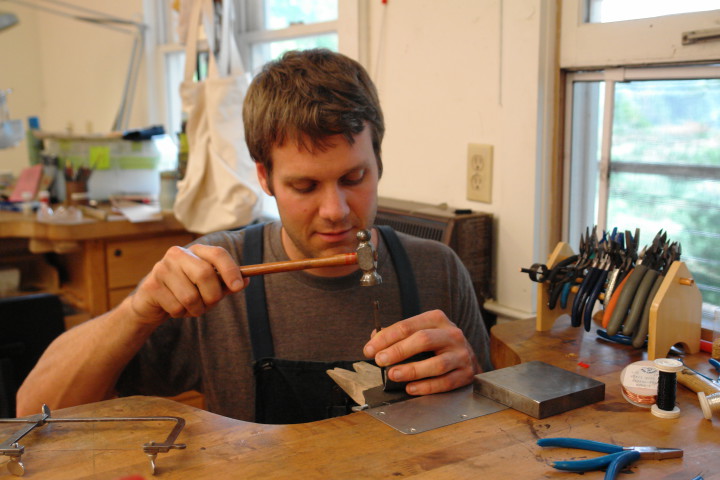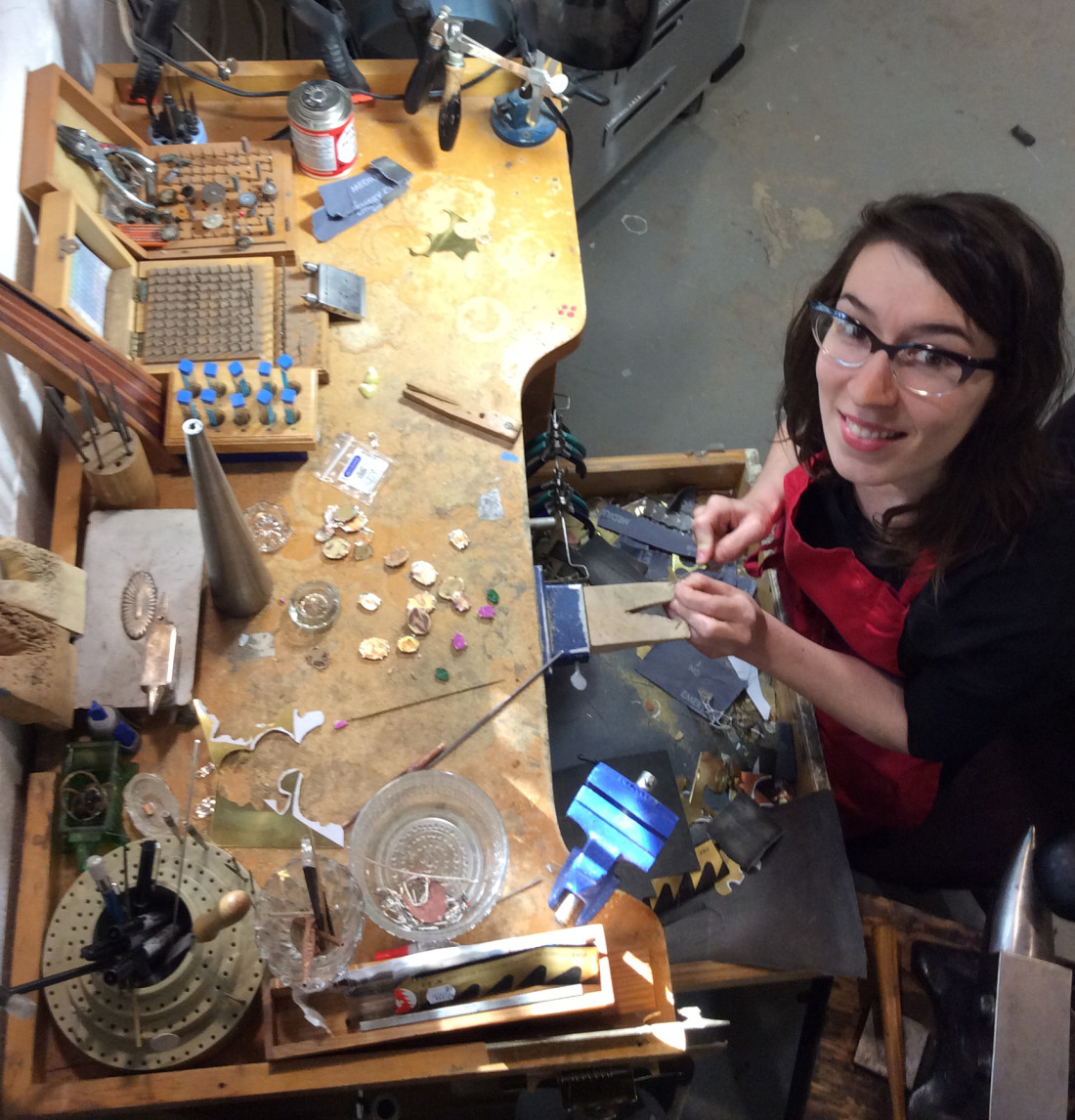Metalwork is more like problem-solving than artistic expression, says Ian Henderson: “It will do exactly what you want it to: be shaped, melt at known temperatures, harden and soften predictably.” The artist has also explored clay, which he describes as fussy and gestural, but “I loved working with metal as soon as I started, because it is the opposite.”
Henderson’s current pieces focus on mechanics and movement. “There’s something deep in shaping things by hand that actually do work,” he says. In one of his pieces, a hand crank turns a sequence of gears that make an owl’s wings gracefully gesticulate. Another, a dovetail box, opens only when its top is pressed to activate a hidden spring mechanism.
These mechanical pieces require audience participation. “I just get a kick out of making things that move,” says Henderson. “I don’t think it’s much more sophisticated than that. There are artists I admire who make kinetic sculpture that is existential and heartbreaking. I would take it there if I could, but for me there is simply joy in the bare-bones, analog world of moving parts.”
The mechanics of how a car’s pistons turn its wheels, he points out, “was once cutting-edge technology, and it was also craft. There wasn’t always this distinction.” In our current digital culture, simple machines can stir something in us that is usually dormant, he says. “For me, that’s as legitimate a task as any.”
The metalworker’s personal history as a maker began in his youth. His father is an engineer and “an inveterate tinkerer,” which gave Henderson access to a basement workshop. Currently, he works as the metals studio coordinator at Penland School of Crafts, taking the job after a two-year stint in the school’s Core Fellowship Program. Before Penland, Henderson was doing construction and renovations. “I was also making some things on the side: quilts, stuffed animals, pottery, but nothing noteworthy and all of it in relative isolation,” he says.
For Henderson, having a day job untethers his creativity, giving his artwork free rein. “I think I’m happier and more inventive without having to sell work all the time,” he says. “Taking some of the financial pressure off means I can be curious and try whatever comes to mind.”

Asheville-based jeweler Laura Wood knows all about the hustle of selling art in order to make a living. “I definitely know jewelry artists who do not, and are not, interested in selling their work in the way that I do it,” she says. Because it’s easier for jewelers to cross boundaries, Wood’s sales outlets range from museum fairs to indie events like The Big Crafty to gallery displays. “As an artist who makes wearable jewelry,” she says, “that’s a leg up on a lot of other media. No one can walk around with a painting around their neck.”
Wood’s creations are displayed at Mora Contemporary Jewelry in Asheville, where she also works part time. This side job in sales has given Wood valuable practice in connecting with clients. “I’ve always enjoyed that intimacy you have when you see them try things on,” she says. “You get to see them love it and wear it and have it affect their lives in a positive way.” Wood’s work, like Henderson’s, requires interaction, though in this case it’s the social connection that bridges the gap between artist and audience.
Wood never expected to have a career in craft. At college, she started out studying dance, but after being introduced to metalsmithing, she fell in love with the medium’s possibilities. “I found that I was very good at building three-dimensionally, and I really enjoyed creating things for the body, which I think ties into my history with dance,” she says.
The rough-cut stones Wood uses reflect time spent in San Antonio, working with mentor Alejandro Sifuentes. Because Wood’s creative process is organic and intuitive, she simultaneously explores how the stones and metal forms relate to each other and how they might adorn the wearer’s body. Since establishing her Asheville studio, Wood has seen her color palette shift toward greens — subconsciously mirroring the colors in her front yard, she says.
And though the jeweler feels she’s finally hitting her stride with her craft, she acknowledges that laying the foundations of a career requires a lot of hard work. “I think it’s very important, as an emerging artist, to understand that you have to cultivate your audience: You have to create those collectors. That’s what I’m trying to do, because I definitely want to do this for the rest of my life.”




Before you comment
The comments section is here to provide a platform for civil dialogue on the issues we face together as a local community. Xpress is committed to offering this platform for all voices, but when the tone of the discussion gets nasty or strays off topic, we believe many people choose not to participate. Xpress editors are determined to moderate comments to ensure a constructive interchange is maintained. All comments judged not to be in keeping with the spirit of civil discourse will be removed and repeat violators will be banned. See here for our terms of service. Thank you for being part of this effort to promote respectful discussion.